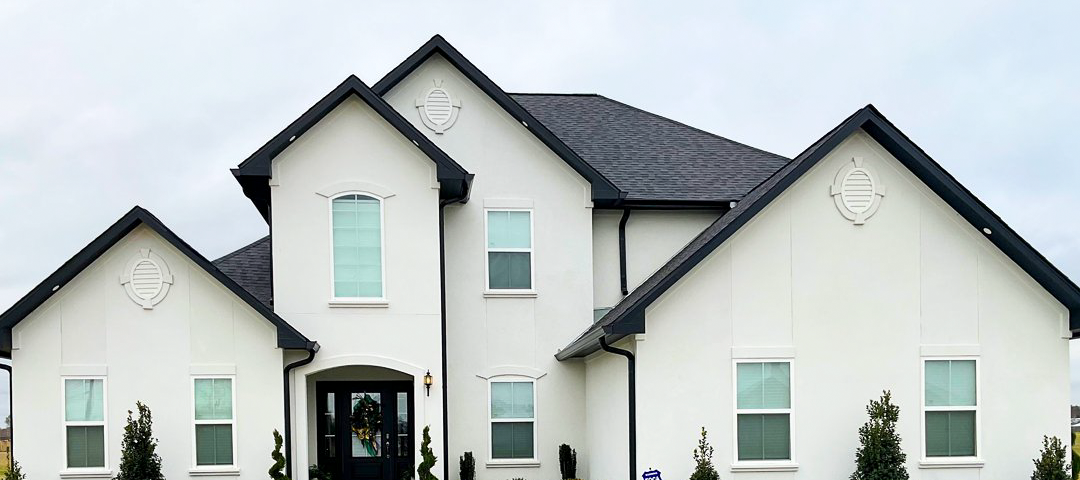
Stucco is a popular choice for exterior finishes on homes and buildings, but it can be a tricky material to work with. Improper installation can lead to costly repairs down the line. Some of the issues that might arise are moisture damage causing you to be victims of mold which is a serious health threat. To ensure a successful stucco installation, it’s important to avoid common mistakes and follow the proper techniques. Read on to learn the right way to install stucco.
You should always install a drainage mat or rainscreen to create a drainage plane and ventilation space behind their stucco installation. When stucco gets wet it absorbs moisture and can hold onto it for a while. Sometimes it dries, other times it can be driven inwards. When that happens the drainage plane or ventilation space is the only thing keeping the water from making its way into the walls of the home. Nothing behind the stucco should block the bottom of the drainage plane, ventilation space or the bottom of the rainscreen gap. Proper flashing around windows and doors needs to be installed to prevent moisture damage.
The layers required on a wood-frame home include:
• Plywood sheathing
• Water barrier (i.e. Tyvek)
• Rainscreen or drainage mat
• Lath
• Stucco scratch coat
• Stucco finish coat
One of the most common mistakes when installing stucco is failing to properly prepare the surface. The surface should be clean, dry, and free of any loose debris or contaminants. Any cracks or holes should be repaired before applying stucco. It’s also important to apply a bonding agent to the surface to ensure the stucco adheres properly. Skipping these steps can lead to a weak bond and eventual cracking or separation of the stucco from the surface.
Choosing the right type of stucco for your project is crucial to its success. There are different types of stucco available, including traditional cement-based stucco, acrylic stucco, and synthetic stucco. Each type has its own advantages and disadvantages, so it’s important to choose the one that best fits your project’s needs. For example, acrylic stucco is more flexible and resistant to cracking, making it a good choice for areas with extreme weather conditions. Synthetic stucco, on the other hand, is more expensive but offers better insulation and energy efficiency.
One of the most common mistakes when installing stucco is applying it in the wrong weather conditions. Stucco should not be applied in extreme temperatures, such as when it’s too hot or too cold. This can cause the stucco to dry too quickly or not adhere properly, leading to cracks and other issues. It’s best to apply stucco when the temperature is between 40 and 90 degrees Fahrenheit and when the humidity is low. Additionally, avoid applying stucco in direct sunlight or on windy days, as this can also affect the drying process.
Another common mistake when installing stucco is not using the correct tools and techniques. It’s important to use the right type of trowel for the job, as well as the correct mix of stucco and water. Applying too much pressure or not enough pressure when spreading the stucco can also lead to issues. Take the time to learn the proper techniques and invest in quality tools to ensure a successful stucco installation.
One of the most important steps in installing stucco is allowing enough time for it to cure before painting or finishing. Rushing this step can lead to cracking, peeling, and other issues with the finished product. The curing time can vary depending on factors such as temperature and humidity, so be sure to follow the manufacturer’s recommendations and allow ample time for the stucco to fully cure before moving on to the next step.
By avoiding these common mistakes, you can ensure a successful stucco installation that will provide long-lasting beauty and protection for your home.